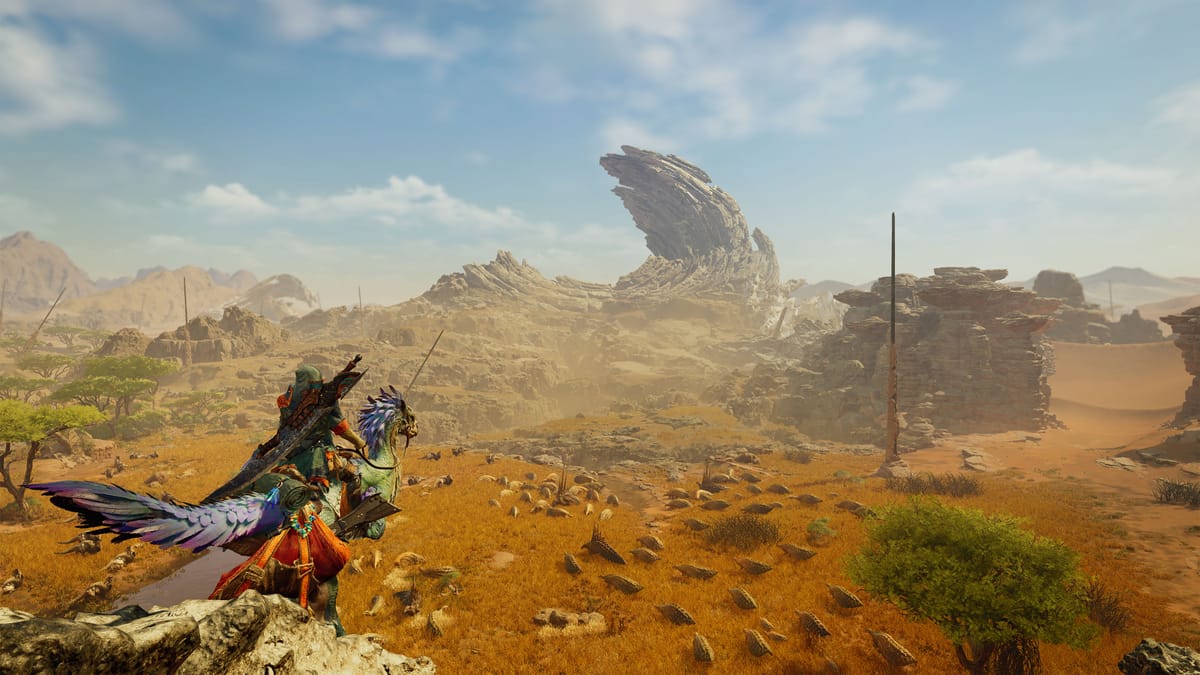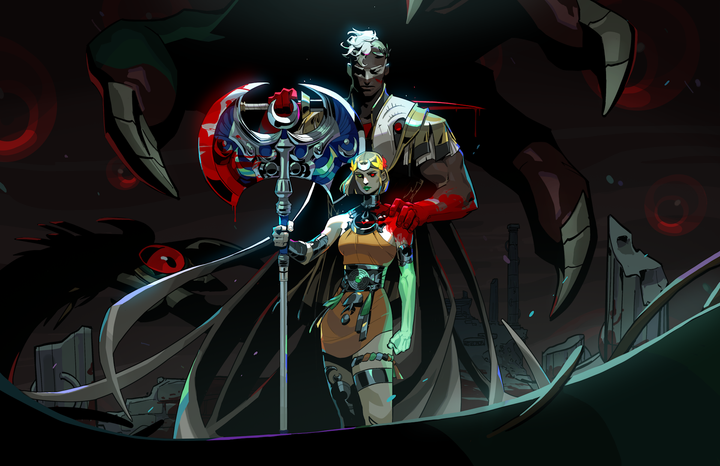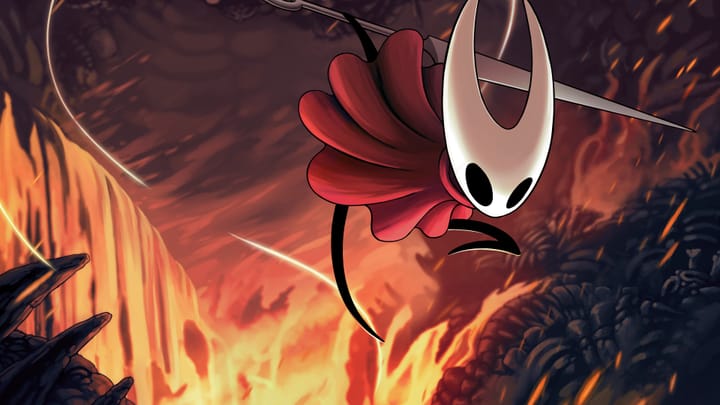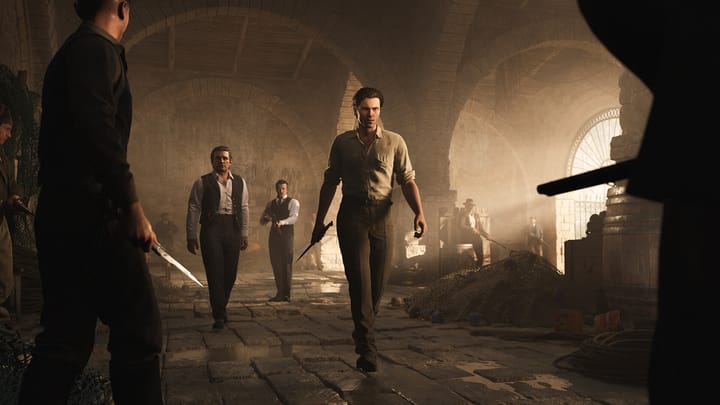Monster Hunter Wilds (Series X): Refining the Kill at the Expense of the Hunt

2018's Monster Hunter: World felt like a realisation moment for the franchise. Though it streamlined certain elements, and while I'd personally still take the Monster Hunter 4: Ultimate over it, the execution cemented it as a real step forwards. The base structure of Monster Hunter, still quite similar to the first game (though has been iterated upon), was still there alongside the core mechanics. However, this was the bigger, more cinematic version of that template – with the undeniable innovation of an interconnected map without load times rather than disconnected small areas. Each larger locale was still made up of zones but you could traverse them without disruption, making it a game that felt alive. This feeling is one of the key draws of Monster Hunter; yes it is a game of great technical complexity, very systems heavy stuff, but it is also built around immersion. The monsters are supposed to feel like animals rather than bosses with rote routines; the fleshed out details of World, with a focus on endemic life and a flowing world, completed this half of the Monster Hunter equation.
Wilds positions itself as the next big step. Where World grew the franchise greatly, becoming the first Monster Hunter for so many and the first Monster Hunter they stuck with for so many more, Wilds has garnered even more popularity. This is the current gen, fully realised Monster Hunter game, positioned as a dynamic, open world Monster Hunter game in a way that should separate it from World. On this level, Wilds is somewhat of a failure. In many regards, the game feels like a step backwards – especially in structure – and it certainly doesn't give the impression of any kind of innovation. The open world promise ends up still being a collection of separate zones – distinct biomes that aren't overly large –and while monsters will roam around them for you to fight, the most efficient way to tackle things is still the old fashioned way: take on a quest, take down that monster and return to camp. When out in the wilds, a monster may tussle with another monster, but World did this also. The design of the world may have changed, and it may have more dynamic possibilities, but the structure placed upon it has not. Ostensibly, you will be picking a mission from a menu – the one that has the hunt you want for the resources you want – and then you will complete it. You could be out in the map making pop-up camps and handling hunts on the go in that way but the experience doesn't really shift.
It helps, then, that the core is utterly excellent. In terms of monster fighting this is the apex of the franchise. The full suite of weapons has returned, each providing a divergent and rewarding experience, with rebalances and tweaks. Taking on a monster truly does feel better than ever, with some performance issues as the only downside (even on performance mode, the game hitches up in bigger fights and the game is built around bigger fights – though it's never too much of a problem on console). The behaviour of the beasts feels more natural than ever, aided by stunning animations. The monsters look incredible and their behaviour set makes them feel extant, like a real and organic threat that is reacting to you rather than going through a list of parameters. Tweaks to fighting include a wound system. You can still focus on body parts to try and sever them (when monsters allow this) but also attacking at a monster will open up wounds. If you do enough damage to these wounds they are 'destroyed' – ruptured, basically – and this delivers a massive blow and may open up new possibilities. You can go into a focus mode at any point, this gives you a reticule on screen that helps you aim your weapon (perfect for well placed swings) and also, when in this mode, wounds glow red. You now have a special attack (pressing RB when in focus mode) to use on these areas and you will do a focused strike that destroys the wound. This might knock a monster over, it might stun a monster or it might change the behaviours of it. While some may lament this making things easier or more gamified, really it makes for a more reactive and engaging fight. You have another thing to be focusing on, another risk reward element that can draw you in and create as much danger as it does advantage. The wound mechanic gives fights a great rhythm, and another reason to really focus on the visuals of the monster. Perhaps the glow is a touch too much but it easily separates this mechanic from the wider battle damage that the beasts accrue – becoming walking life bars as they get closer to death.
Not every change is positive, though. The core issue with the game is a philosophical one built around how this is really positioned as the next step for Monster Hunter. This time, the focus is on streamlining. Clearly it's worked, as the game is a huge success, but the experience has been compromised. This isn't a knock against accessibility but a criticism of how the game executes this aim. In the end, it is not made more accessible. In fact, it's bizarrely obfuscated. The game throws you into a poorly paced campaign and automates a lot of the systems that are actually the bread and butter of the franchise. The campaign has a lot of cutscenes and a lot of talking. Cutscenes where monsters appear are great; with a few exceptions, the rest are bad. The game's structure has you pretty much going monster to monster, with (utterly bland) narrative moments in between. There's no prep phase, and certainly no tracking. You come across a beast as part of the mission and you fight it. You will probably win – the low rank fights that make up the campaign before the credits roll are fun but not challenging – and then you'll be on another mission. You will also spend most of the time on the back of a mount called the Seikret, a very Chocobo like creature. The Seikret moves by itself, though you can take over control, and you can do most things while mounted. There are items everywhere and you can gather almost all of them while riding and from a distance, aiming this grapple hook style thing and pulling it in. It's very mindless and most of the time you won't even know what you are grabbing. The mount auto follows whatever you have targeted and you just sit back and let the game play. It's such an incongruous fit in the supposed expanded, open world. This bigger game than ever feels on rails and every in between moment – something open worlds should accentuate – feels skipped over.
Monsters run away mid fight still but then you just press up on the d-pad and you're automatically running after them. Outside of fighting monsters, the game is deeply unengaging, with a lot of the risk sanded off. The Seikret becomes a get out of jail card, a thing you can just summon to you and then get out of danger with relative ease. You can sharpen your weapon while riding, use items while riding; in low rank it seems far too forgiving. The high ranks fights make it work better, functioning as necessary breathing room that adds intensity to the wider fight but it still feels far too hands off. The wider problem is that all the complex systems are there, you just aren't pushed to engage with them. The loop pushed upon you by the campaign keeps you on the go, moving forwards on rails, when really you want to know what resources you have, prepare before a hunt and think about the monster you are taking on. The pacing is bad and it puts players in a position where they will eventually have to engage with systems that the game has trained them out of, or just made them ignore. The true satisfaction of the game is still in going into the monster manual, perusing the flavour text to work out weaknesses as well as looking at where you have to attack them to get what loot. This is all part of the hunting element but the campaign eschews this. There's a slow drip of mechanics to the extent that being ready to play the game means actually completing the game.
This would work if what you were doing to get to that point felt worthwhile and wasn't so damn drawn out. You are constrained into this terrible campaign structure for so long, kept away from the part of the game that the mechanics are actually built around. Eventually, you are left to the wilderness, deep into a complex game where things have ramped up and you haven't been guided to deal with this at all – a real failing. The knock-on effect of this is that the wider experience feels stripped back. The more satisfying elements are just legacy, a tried and tested structure that the game has hidden away. These immersive and engaging mechanics could be iterated upon, as they still abide by standards set on the PlayStation 2 and there's room for widening the sense of the hunt, rather than sanding it all down. The possibilities of a living, breathing world with monster hunter style encounters should offer you more ways to interact with that world but you feel more limited than ever. It is true that locations have more going on in them, with environmental hazards that can really shake things up. Enemies aren't just falling into traps anymore, you can be out in a sand dune with you and your foe falling into it and losing our footing. These environments are awesome but the game doesn't front them well. It isn't a dynamic world you find yourself in, you will primarily still experience it as a scripted world. You could just be out in the wilds exploring but there's no reason to, and missions give you the set parameters that make the encounters interesting.
The fighting is better than ever but the hunting is at an all time low. Luckily, the centre is utterly incredible and the added scale of this modern version does bring something. Multiplayer is improved, also, though still a touch too arcane (not as seamless as it should). Getting together to take down a beast has never been more exciting and enjoyable. For this reason, the gear grind is still really involving and the game is compulsive and rewarding. It's an excellent loop where the encounters feel so impactful and just offer something nothing else does. The structure around this is so disappointing. Post credits, things get better (and there's as much campaign content afterwards as there is before): you get open spaces where you have to raise your rank before the next mission. This forces you to engage with the game and its systems, to discover its strengths. It is too little too late, though. The systems don't feel like the equal of the enlarged world, with this game providing no step up to the experience like World did, and instead sanding so much of it down. When you're in the thick of it, it's as hardcore as ever – with complex weapons that have high skill ceilings – but the play around this can be listless. Where the previous blockbuster instalment did feel like it offered a whole new World, this is a touch too close to Monster Hunter Mild.





Comments ()